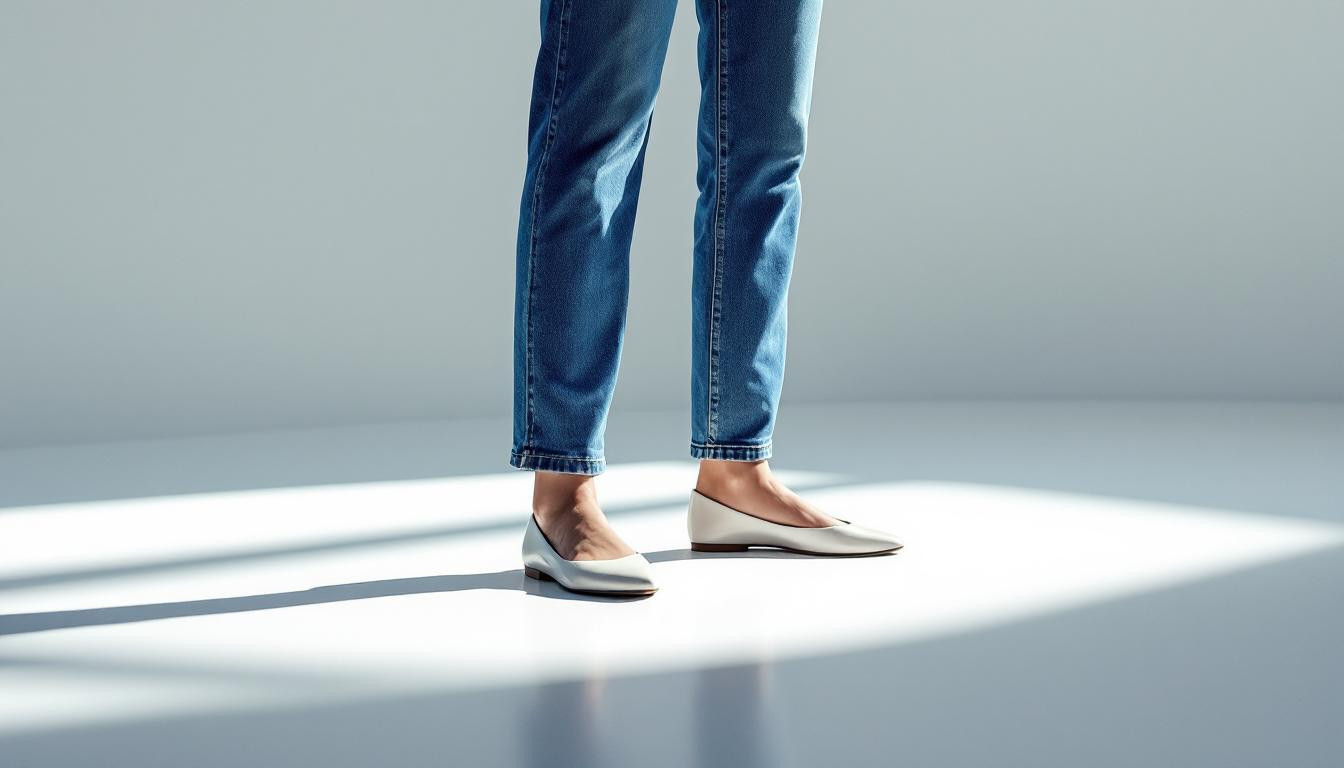Summer brings a delightful opportunity to refresh our wardrobe and one critical pairing that’s winning this July 2025 is flat shoes with perfectly fitted jeans. The right jeans length isn’t just a style preference—it’s a transformative styling rule that can elevate your everyday look without sacrificing comfort in the heat.
The ankle bone rule: The universal jeans length for wearing flats
The most important rule for pairing jeans with flats is ridiculously simple yet transformative: the hem should hit just above your ankle bone. According to style expert Caroline Bennett, “The perfect jeans length reveals about half an inch of skin above the ankle, creating a visual break that elongates the leg and prevents fabric bunching that can ruin your silhouette.”
I tried this ankle bone jean length myself and was amazed at how such a small adjustment made such a significant difference in how polished my casual summer outfits looked.
Why wide-leg jeans need special length consideration
Wide-leg jeans have dominated Summer 2025 fashion, but they require extra attention to length when wearing flats. “For wide-leg styles, a slightly more cropped length is essential,” explains fashion consultant Maya Rodriguez. “Too long and they’ll drag on the ground; too short and the proportion looks off. Aim for that sweet spot right above the ankle bone.”
The looser jean styles that have become summer staples actually create the illusion of height when properly hemmed—a welcome benefit during hot months when comfort is key.
Skinny jeans still work with the ankle bone rule
Despite the rise of wider silhouettes, skinny jeans remain a wardrobe staple for many. The same ankle bone rule applies, but with skinny jeans, precision is even more important. The slim leg opening means any bunching becomes immediately noticeable.
“When wearing skinny jeans with flats, I always recommend a clean break at the ankle. This creates a streamlined silhouette that’s both flattering and practical for summer activities,” says denim specialist Taylor Johnson.
The flats that maximize the ankle bone rule
Not all flats are created equal when it comes to complementing the ankle bone jean length. This July, neutral flats are proving to be the most versatile option, creating a continuous leg line that visually elongates your silhouette.
Having a streamlined collection of neutral flats also simplifies your summer morning routine—an unexpected bonus of applying this length rule.
Bootcut and flared jeans: The exception that proves the rule
For bootcut or flared styles, the ankle bone rule needs a slight adjustment. These jeans should still avoid touching the ground but may need to be a fraction longer than other styles.
- Bootcut jeans: Hem should hover about 1/4 inch above the ground
- Flared jeans: The flare should begin below the knee for best proportion
- High-waisted flares: Can be slightly shorter for a modern summer look
The waist fit connection to proper length
Interestingly, how jeans fit at the waist affects how the length works with flats. A well-fitted waist ensures the jeans hang properly, maintaining that crucial ankle bone length throughout wear.
DIY length adjustment: Summer 2025’s practical approach
Many style-conscious shoppers are embracing DIY hemming this summer. The raw-edge trend makes this particularly accessible—simply cut jeans to hit just above the ankle bone and let them naturally fray in the summer heat.
“The raw edge hem is summer 2025’s answer to the length dilemma. It’s perfectly imperfect and creates that ideal length for flats without requiring professional alterations,” notes sustainable fashion advocate Emma Chen.
The ankle bone rule for jeans with flats is like finding the perfect summer recipe—simple ingredients that create something extraordinary. By applying this rule to your wardrobe, you’ll enhance both comfort and style during these warm July days, proving that sometimes the smallest adjustments make the biggest difference.
